- At Gulf Coast Community College, a comprehensive public institution, we provide high quality, affordable educational, training, and enrichment programs. We serve primarily the residents of Florida’s Bay, Gulf, and Franklin counties.
School Highlights
Gulf Coast State College serves 6,187 students (40% of students are full-time).
The college's student:teacher ratio of 14:1 is lower than the state community college average of 20:1.
Minority enrollment is 31% of the student body (majority Black and Hispanic), which is less than the state average of 67%.
Quick Stats (2025)
- Enrollment: 6,187 students
- In-state tuition: $2,765
- Out-state tuition: $10,072
- Student:teacher ratio: 14:1
- Minority enrollment: 31%
- Source: Integrated Postsecondary Education Data System (IPEDS)
Top Rankings
Gulf Coast State College ranks among the top 20% of public schools in Florida for:
Category
Attribute
Affordability
Community Size
Debt For Students
School Overview
The teacher population of 427 teachers has stayed relatively flat over five years.
Gulf Coast State College
(FL) Community College Avg.
Carnegie Classification
Baccalaureate/Associate's Colleges: Associate's Dominant
Not applicable, not in Carnegie universe (not accredited or nondegree-granting)
Institution Level
Four or more years
At least 2 but less than 4 years
Institution Control
Public
Private not-for-profit
Total Faculty
427 staff
139 staff
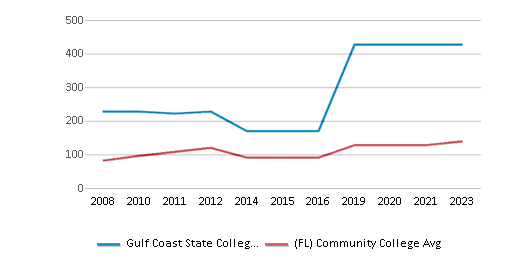
School Calendar
Student Body
The student population of Gulf Coast State College has grown by 28% over five years.
The student:teacher ratio of 14:1 has increased from 10:1 over five years.
The Gulf Coast State College diversity score of 0.50 is less than the state average of 0.76. The school's diversity has stayed relatively flat over five years.
Total Enrollment
6,187 students
646 students
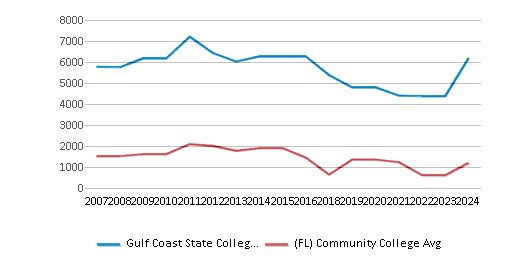
Student : Teacher Ratio
14:1
20:1
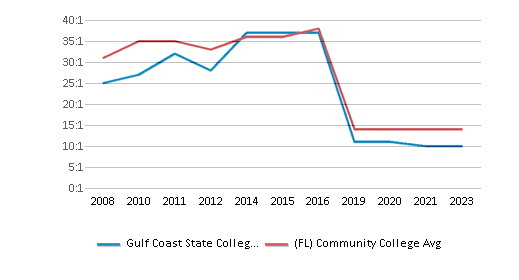
# Full-Time Students
2,466 students
587 students
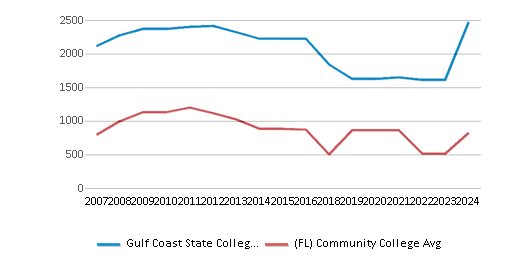
# Part-Time Students
3,721 students
557 students
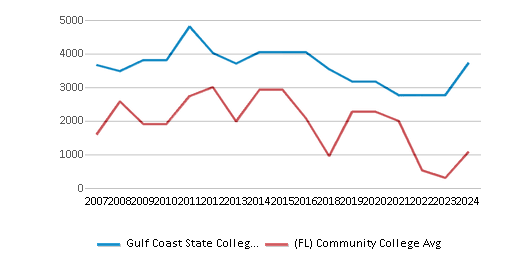
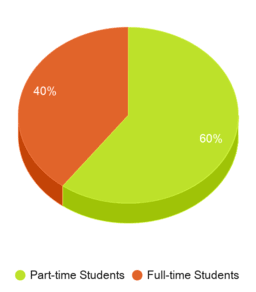
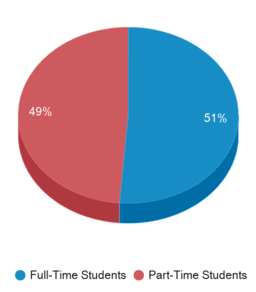
# Enrollment Undergraduate
618 students
261 students
# Full-Time Undergraduate Students
2,466 students
574 students

# Full-Time Graduate Students
n/a
85 students
# Part-Time Undergraduate Students
3,721 students
648 students
# Part-Time Graduate Students
n/a
36 students
Total Dormitory Capacity
n/a
174 students
% American Indian/Alaskan
n/a
n/a
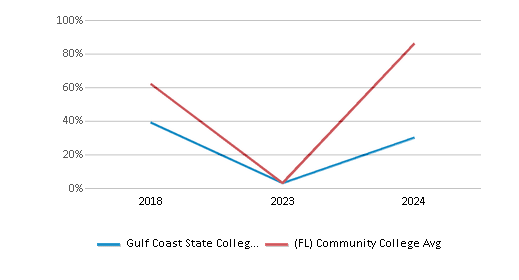
% Asian
4%
5%

% Hispanic
7%
30%

% Black
11%
19%

% White
69%
33%
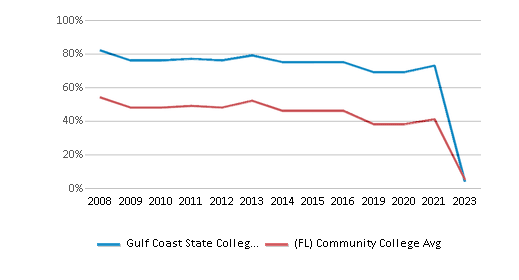
% Hawaiian
n/a
2%
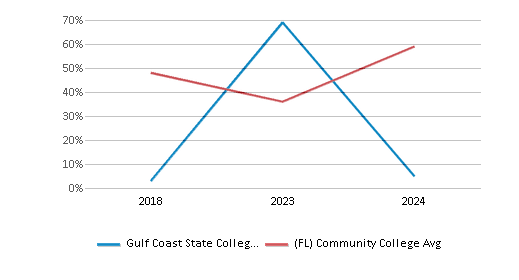
% Two or more races
4%
4%
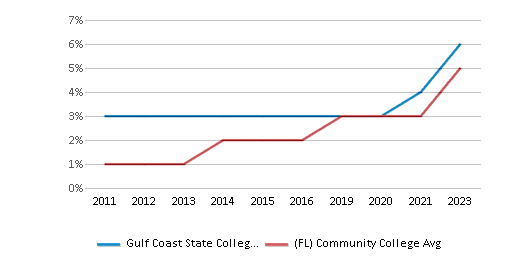
% Non Resident races
n/a
2%
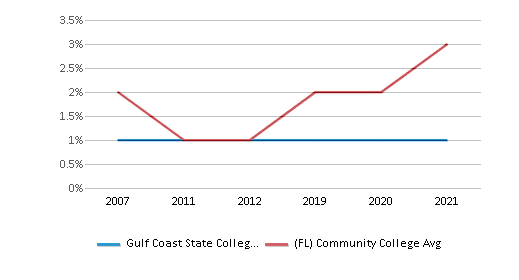
% Unknown races
4%
5%
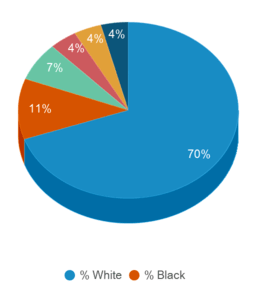
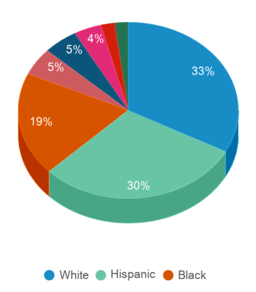
Diversity Score
0.50
0.76
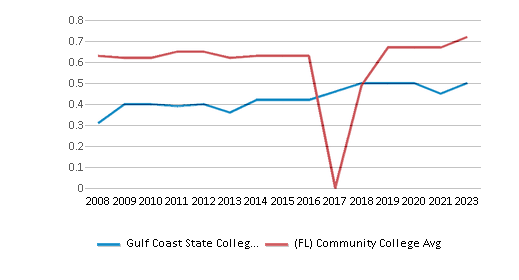
College Completion Rate (Students who graduate in less than 4 years)
38%
44%
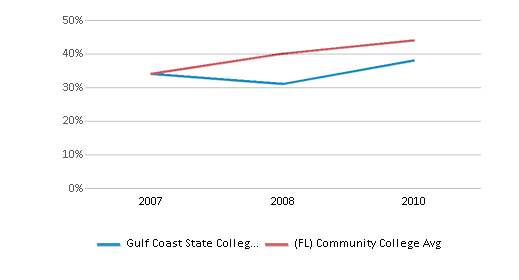
College Completion Rate (Students who graduate in 4 years or more than 4 years)
0.3823%
0.4334%
Average Graduate Earnings (10 Years)
$30,800
$31,500
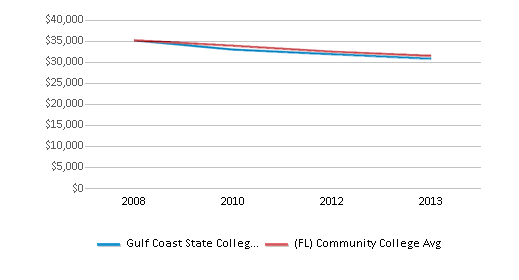
Tuition and Acceptance Rate
The public in-state tuition of $2,765 is less than the state average of $3,280. The in-state tuition has grown by 16% over four years.
The public out-state tuition of $10,072 is less than the state average of $10,578. The out-state tuition has grown by 16% over four years.
In-State Tuition Fees
$2,765
$3,280
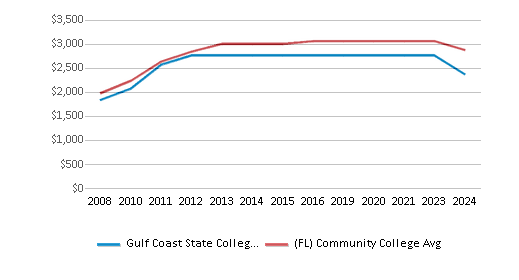
Out-State Tuition Fees
$10,072
$10,578
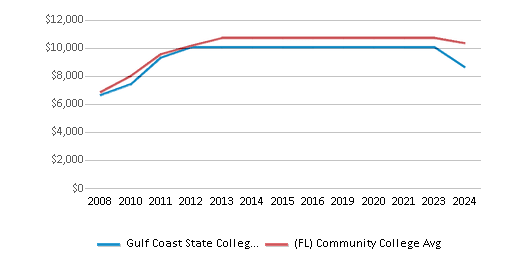
% Students Receiving Some Financial Aid
89%
88%

Median Debt for Graduates
$6,700
$9,750
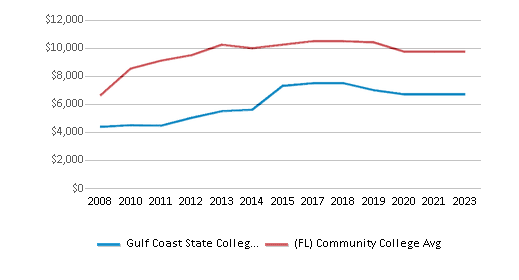
Median Debt for Dropouts
$4,500
$5,500
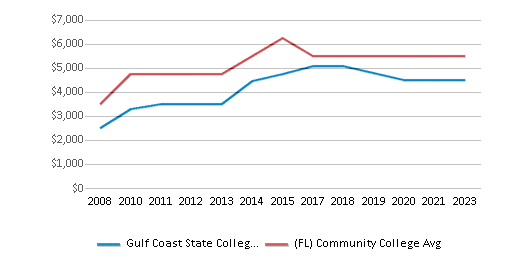
Acceptance Rate
n/a
94%
SAT Reading
n/a
442
SAT Math
n/a
429
ACT Composite
n/a
18
ACT English
n/a
18
ACT Math
n/a
18
Source: 2024 (or latest year available) Integrated Postsecondary Education Data System (IPEDS) , School Administrators
School Notes
- Gulf Coast State College provides a first-class education with an emphasis on success. With some of the lowest tuition rates in Florida, Gulf Coast offers over 150 programs focused on quality and practicality.The College offers four bachelor’s degrees in Digital Media, Technology Management, Nursing and Organizational Management with specializations in Entrepreneurship, Health Services Administration and Emergency Services Administration. Our students may pursue an Associate in Arts degree with 75 different transfer-tracks, workforce specific Associate in Science degrees and technical certifications, including the Educator Preparation Institute.We serve students in traditional classes, online courses, Corporate College and professional training courses with classes at convenient times and in multiple locations. In addition to the main campus in Panama City, the College holds classes at Tyndall Air Force Base, the North Bay Campus in Southport and the Gulf/Franklin Campus in Port St. Joe. The College is also recognized as one of the top-tier military friendly colleges in the country, providing a supportive environment for active duty, reservist and dependents as well as veterans. Our goal at Gulf Coast State College is simple – to offer the highest quality, accessible and affordable education and training. Our students really start here and go anywhere!
Frequently Asked Questions
How much does Gulf Coast State College cost?
Gulf Coast State College's tuition is approximately $2,765 for In-State students and $10,072 for Out-State students.
What is Gulf Coast State College's ranking?
Gulf Coast State College ranks among the top 20% of community college in Florida for: Least expensive tuition, Largest student body and Least debt for graduating students.
Recent Articles

Obtaining Your Bachelor's Degree at a Community College
Explore the evolving landscape of community colleges offering bachelor's degrees, addressing affordability, accessibility, and workforce needs.

A to Z of Community College Certificates and Courses
From business and healthcare to technology and skilled trades, the article showcases the breadth of options available to students seeking to enhance their knowledge, develop new skills, or pursue career advancement.

What is a Community College?
This comprehensive guide explains what a community college is, its history, and its role in higher education. It covers the types of programs offered, differences from four-year colleges, benefits of attending, and important considerations for prospective students, providing valuable insights for those exploring educational options.










